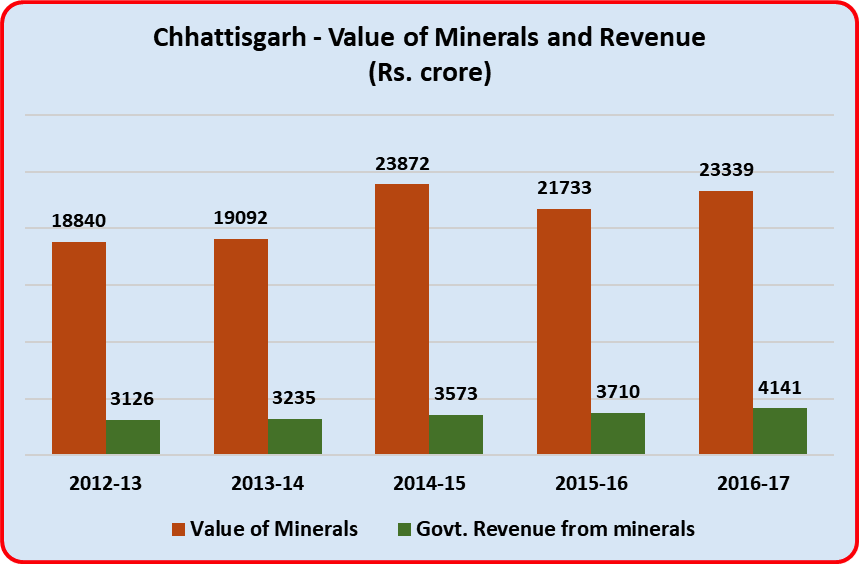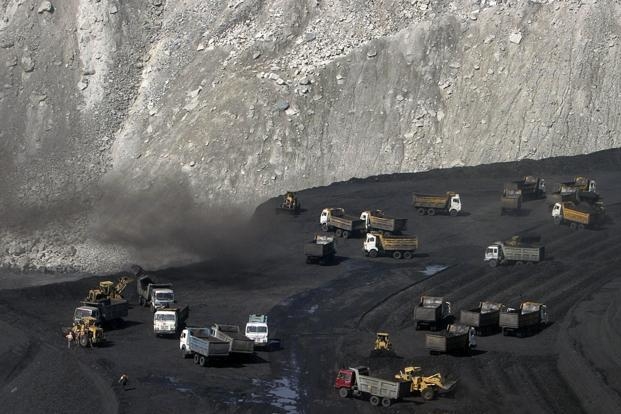The people of the state remain trapped in poverty as natural resources flow into corporate pockets.
Remember: Chhattisgarh has deposits of 28 minerals, including over 52 billion tonnes of coal (18% of India’s deposits), 2.7 billion tonnes of high-quality iron ore (19% of India’s deposits), and over 37% of India’s tin ore deposits, besides bauxite, limestone, dolomite, quartzite, etc. In 2016-17, some Rs 23,339 crore worth of mineral wealth was extracted from the state.
What do the state’s people get out of this? Have a look at the chart below which shows the value of minerals extracted and the revenue that the state government earned for the past few years.

As can be seen, roughly 16-17% of the value flows to state government coffers only. The rest of it is swallowed up by the predatory mining companies that had been granted leases of over 24,000 hectares of mining blocks till 2016, as per the Indian Bureau of Mines.
India’s political establishment has created the impression that this is normal. How else will natural resources be managed if not by giving leases to private companies who will mobilise resources to extract the minerals and process them? But this is not the only way!
Consider this: the extraction of natural resources could have been executed and managed – in a much more sustainable way – by state agencies so that its benefits could have directly belonged to the people. After all, before the current hysteria for private sector began, India was mining coal and iron and all the other mineral resources.
This would have given an additional benefit: the coercive displacement of people from lands in order to get at the rich stores of minerals below it would have been – perhaps – tempered. It would definitely have been more subject to accountability and oversight.
But currently, such is the overwhelming desire of the state government – held by the Bharatiya Janata Party (BJP) since the state was hived off from Madhya Pradesh – to please powerful private entities that all rules and laws are reportedly broken to grab land from hapless villagers.
Perhaps, the state government has been spending a lot on social sector (education, health, etc.) or on general development programmes? A quick look at theRBI’s data on social sector expenditure as a share of the gross state domestic product (GSDP) shows that this spending has stagnated at around 11-12% for the past several years. So, the great growth rate of Chhattisgarh’s economy by over 10% in the last decade, spurred by mining and power plants and cement factories, has not meant any relief from grinding poverty in the state’s vast hinterland. Naya Raipur is, of course, on the road to becoming a smart city (whatever that means!) but in distant tribal hamlets and Dalit habitations, there is no change in life.
Chhattisgarh has also done well in terms of agricultural production, yet its farmers are seething with anger because their back-breaking labour is not worth much. The prices they get for their produce barely meet expenses. The rural job guarantee scheme (MGNREGS) provides a daily wage of Rs.174 only. Last year, some 42 lakh persons worked at this wage in the scheme.
Had the resources of Chhattisgarh been used more equitably, 38% of children under 5 would not have been stunted, 42% would not be anaemic, nor would a stunning 47% of all women be anaemic, as per the latest data from National Family Health Survey-4. Female literacy rate in the state is just 66% and only 27% of women have had 10 years of schooling.
If the ongoing elections throw up a strange result, see it as a cry for help from the state’s people – they hardly have any choices as the dominant narrative is tilted against them.
Courtesy: Newsclick.in

